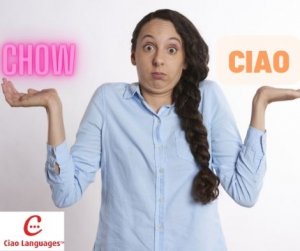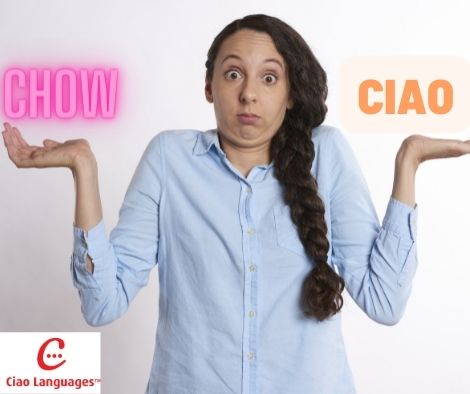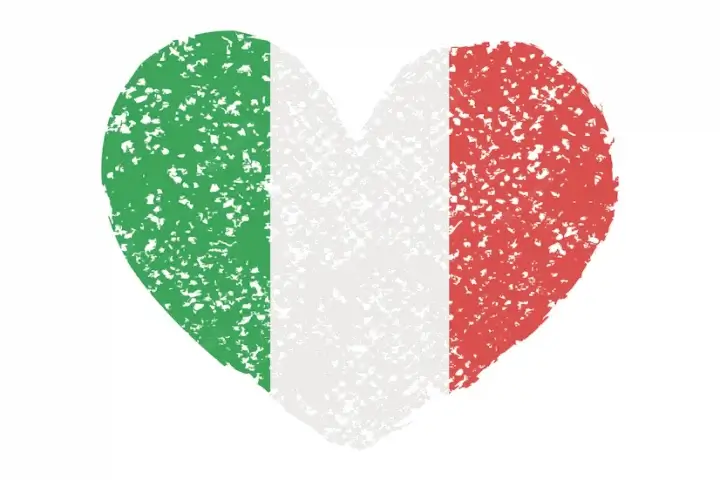How do you spell “Chow,” I mean “Ciao” in Italian?
How do you spell “Chow,” I mean “Ciao” in Italian?
Who here hasn’t at one point in their lives heard the word Ciao used in a conversation? Or on the radio or in a movie, usually set in Italy or featuring Italian characters? It is one of the most universally-used foreign words known and used by speakers of different languages from all over the world. It’s an Italian word, but it is used widely in France, Germany, Spain and other European countries.
You could argue that the word Ciao is Italy’s biggest world-wide export.
In this article we’re going to cover everything you need to know about usage of the word, as well as how to spell it and pronounce it. Once we’ve cleared that up, we can move on to its historical origins and discuss how Italians actually use it.
Read on to learn more about this famous greeting.
1. How do you spell “Chow,” I mean, “Ciao”?
A lot of people are confused about how to spell words in Italian, especially Italian’s most commonly-used word, Ciao, which means both “Hello” and “Goodbye.”
Similar to aloha in the Hawaiian language, Ciao is used for both greetings and for taking leave.
So far, so good, right? Every one seems to know this, but when they go to tap the word into the computer, they spell it every way but the right way!
So, what is the correct spelling of “CIAO” and why?
C – I – A – O is the correct answer. Many people think it’s written C-H-O-W, but it’s NOT! If you only knew the “c + “i” / “c” + “h” + “i” rule you would never make this mistake!
2. What is the “c + “i” / “c” + “h” + “i” rule in Italian?
Italian pronunciation and spelling rules are clear, easy to follow and do not allow for exceptions.
Different sounds are assigned to letters or combinations of letters, and if you know the rules, correct pronunciation follows as a matter of course.
Crucial to understanding the spelling of Ciao is how Italian deals with the letter “C.”
– The letter “C” is pronounced like the “K” in English, or written phonetically, /k/, if it is followed the vowels “A,” “O,” or “U.” Some examples of this are:
Caldo = /kal ‘do/ = (KAL – DOH) Hot
Come = /Ko ‘mei/ (KOH – MAY) = How
Cubo = /Ku ‘bo/ (KOO – BOH) = Cube
– If, on the other hand, the letter “C” is followed by the letter “I” or “E,” the “C” changes from the “K” sound in “Kite” (written phonetically, /k/) to the “CH” sound in “Child” (written phonetically, /tʃ/).
Here are some examples of this:
Cisto = /tʃi ‘sto/ (CHEE – STOH) = Cyst
Cina = /tʃi ‘na/ (CHEE – NAH) = China
Cesto = /tʃe ‘sto/ (CHE – STOH) = Basket
– If, though, you place an “H” between “C” and “I” or “E,” the letter “C” has the /k/ sound.
Here are some really common examples:
Chianti = /ki ‘an ti/ (KEE – AHN – TEE): Chianti region wine
Catechismo = /ka tei ‘kis mo/ (KAH – TAY – KEES – MOH/: Catechism
Che = /kei/ (KAY) = What
Scherzo = /skeir ‘tso/ (SKAYR – TSO): Joke
So, clearly, since the first sound of the word Ciao is “CHEE” (/tʃi/), the first two letters must be “C” + “I”….
So, so far we know why the first two letters are “Ci….”
3. How is the “ao” in ciao supposed to be pronounced?
Said together quickly the “ao” in Ciao seems to make the sound “ow,” similar to the sound you make when you are in pain.
However, a careful listener will notice what is in fact being said is “AH OH.” It’s two different vowel sounds being said in rapid succession to give the illusion of an “OW” sound.
It’s not a very common letter combination in Italian, but here are some examples.
Paola /pa ‘o la/ (PAH – OH – LAH) = “Paula,” the name
Caccao /kak ‘ka o/ (KAH – KA – OH) = chocolate
Paonazzo /pa o ‘naz zo/ (POW OH NATSO) = livid
So, here’s our friend, “Ciao”:
Ciao /tʃao/ (CHA – OH)
4. Common misspellings.
Although Italian spelling rules are so clear, people have found many creative ways to get it wrong.
Here are two examples:
“Chow” – This is wrong because in Italian the “H” after the “C” turns the sound into a hard “K” sound (/k/).
“Caio” – This is wrong because in Italian the C-A-I combination would be pronounced “KAI” as in “Kaiser” or “Cobra Kai.”
5. What is the history of the word Ciao?
The word Ciao originates from the northeastern area of Italy known as Veneto, as part of the Venetian language. In that area, it started out as Ciào. In terms of etymology, it comes from the greeting s-ciào vostro and s-ciào su, which translate roughly to “I am your slave.” or “I am at your service.”
These phrases were historically equivalent to expressions used by servants in European countries who would approach a ruler or lord and claim their fealty or obedience in this fashion. During the latter 19th century, ciào spread across Northern Italy and to other areas. The original usage fell out of favor over time, but eventually became the more casual ciao spelling and expression used by the masses, becoming recognized today as an informal way of saying “hello” and “goodbye.”
Since Portuguese and Spanish languages both share Latin language roots with Italian, Ciao eventually became accepted as an alternative to similar greetings and parting words like hola and olá and adiós and adeus, respectively. Cultural acceptance helped spread this usage because Ciao became popular as a way of signaling one’s chic status. In time, it became stylish and a sign of sophistication to use ciao around the world in everyday speech.
6. When is it appropriate to use the word ciao in conversation with Italians?
Italians actually use Ciao in more than one way. The person that you’re addressing and the context of a conversation matter.
Typically, you use it informally with anyone that you would address with the pronoun tu (second person informal singular form), such as a relative or friend. Of course, you might use it informally with someone you’ve met for the first time if you’re both in a location where informal speech is the norm, such as at a beach or party.
If you are at all familiar with Italian as spoken by Italians, you’ll also surely have heard the following expressions:
Ciao, bella! (“Hello, beautiful!”)
Ciao, tutti! (“Hello, everyone!”)
Ciao, ragazzi! (Hi, guys!)
Hey, Ciao, (“Hey, hi.” or “Hey, goodbye.”)
Ciao. Ciao. (“Hello. Hello.,” “Hi. Hi.,” “Goodbye. Goodbye.” or “Bye. Bye.”)
Oh, va be’, ciao! (“Nevermind” or “Forget about it!”)
Ok, so now hopefully after having read this article, you’ll not only know how to spell Ciao, but also why it is spelled the way it is.
If you want to learn more about Italian spelling and pronunciation rules, check out some of our other articles.
By the way, if all of this has gotten you interested in learning a bit of Italian, please contact us at Ciao Languages. Ciao Languages is an online language school that works with experienced native speaking language teachers and gets you to speak and converse immediately in Italian. For info about courses, check out our current offerings – we offer both individual and group courses and are able to get you started immediately.
At Ciao Languages, we get you from “Hello” to “Goodbye” and back again.




